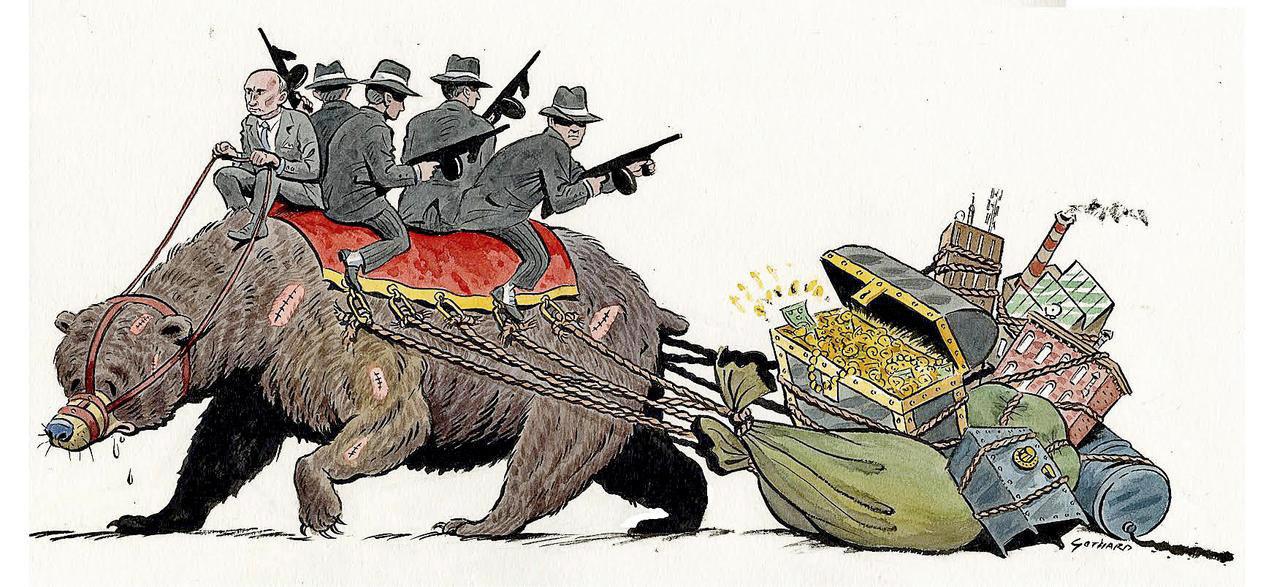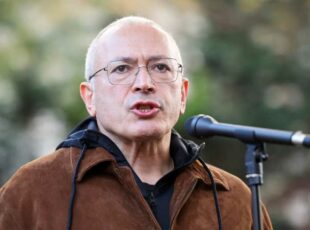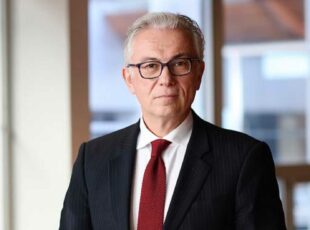How to Stop Vladimir Putin’s Mafia
The real enemy is a group of about 100 beneficiaries of the regime and several thousand accomplices.

After Donald Trump’s victory in 2016, I predicted that Russia’s stance toward the U.S. would become more antagonistic. Vladimir Putin always needs a foreign enemy to rally his nation around him and divert attention from the poor Russian economy. Mr. Putin’s aggression has indeed managed to raise tension between the U.S. and Russia. But instead of reinforcing Mr. Putin’s narrative by punishing Russia as a whole, the U.S. should target its response toward Mr. Putin and his inner circle.
Mr. Putin’s conflicts with the U.S. are clearly intended to improve his reputation among the Russian people. Through his policy and rhetoric, Mr. Putin has spread the notion that the U.S. is a cunning enemy trying to undermine Russia and is responsible for Russia’s every problem at home and abroad.
Kremlin propaganda makes clear that Russia’s fights in eastern Ukraine and in Syria are aimed specifically at opposing the U.S. Mr. Putin sees the rest of the West—with the exception of the United Kingdom—as nothing but feeble U.S. puppets. And even the U.K. is a weak but crafty opponent.
But to sustain his illusion of strength at home, Mr. Putin must be seen scoring victories over the entire U.S. alliance. This is why he has targeted the internal cohesion of Western nations. The Kremlin has funded fringe movements in France and Germany, provoked conflict in Catalonia, attempted to influence elections in the U.S., and brutally punished Russian defectors in the U.K. and Austria.
While the Kremlin sees its target in clear focus, the West has often failed to identify its enemy correctly. It is only in recent statements by British Prime Minister Theresa May and Foreign Secretary Boris Johnson, following the Kremlin’s poisoning of a Russian defector to the U.K., that a gradual awareness has begun to appear. The enemy is not Russia, a country of nearly 150 million people like you. It is not even the Russian government as a whole, which is composed of nearly three million civil servants, most of whom receive a modest salary and work for the benefit of society as best they can.
The West’s real enemy—and the enemy of the Russian people too—is a group of about 100 key beneficiaries of the Putin regime, and several thousand of their accomplices, many of whom hold posts in the Federal Security Service and the presidential administration.
Most of these people began their careers in the criminal underworld of St. Petersburg. Despite having now taken control of the presidency, the group retains every aspect of the criminal ilk from which they came. They are even conscious that they are a band of criminals whose goal is to steal money and avoid accountability by holding on to power. Their methods include buying people off, blackmail, murder and phony elections. But now they can operate world-wide, not merely in one city.
Acknowledging the mafia origins of Vladimir Putin’s entourage will allow the U.S. and its allies better to understand and resist the group’s actions. Mr. Putin’s strategy is often incomprehensible from a normal political perspective, but the background of his circle indicates his aims and vulnerabilities.
They are unconcerned about people—to them ordinary Russians are mere cattle and rabble. They are unconcerned about the country’s long-term future—for them Russia is something to be plundered and, at the same time, serves as a means of protection.
Mr. Putin’s cronies don’t mind being known as ruthless and unconscionable brutes, so long as their critics pose no challenge to their interests. They don’t rely on the law, so only power matters to them; they want to be feared in the international arena.
On the other hand, these people are very sensitive to exposure—to having their activities become public knowledge—because they are used to hiding from society. They also place a high value on money and luxury; losing wealth and comfort is painful to them.
This is a mafia, after all. But it is a mafia with access to the finest lobbying firms, corrupt politicians, and lawyers (who have forgotten that they are also accountable to the law). They also boast the support of the politically obedient Russian mass media.
The effective method of fighting mafia groups is already well established. It isn’t diplomacy, though negotiations are necessary. It isn’t broad economic sanctions, which hit ordinary people but are ineffective against the mafiosi.
The best method of targeting Mr. Putin’s circle is to identify its individual members, along with their accomplices and the politicians they have paid off. Then, the U.S. and its allies could act to cut them off from the mechanisms of their influence loot—the people, money, and corporations they control in the West.
The Magnitsky Act, passed by Congress in 2012 to punish murderous Russian officials, shook the sense of impunity among Mr. Putin’s allies. A recent Spanish probe uncovered one of their criminal groups—with connections to the very top.
Resisting Mr. Putin’s regime will require this type of action.
Identifying the group’s members, cutting them off from their overseas resources, and making their crimes public—that is the recipe for success in the confrontation with one of the most dangerous mafia gangs of the century.
This article first appeared in the Wall Street Journal. You can read the original here.



